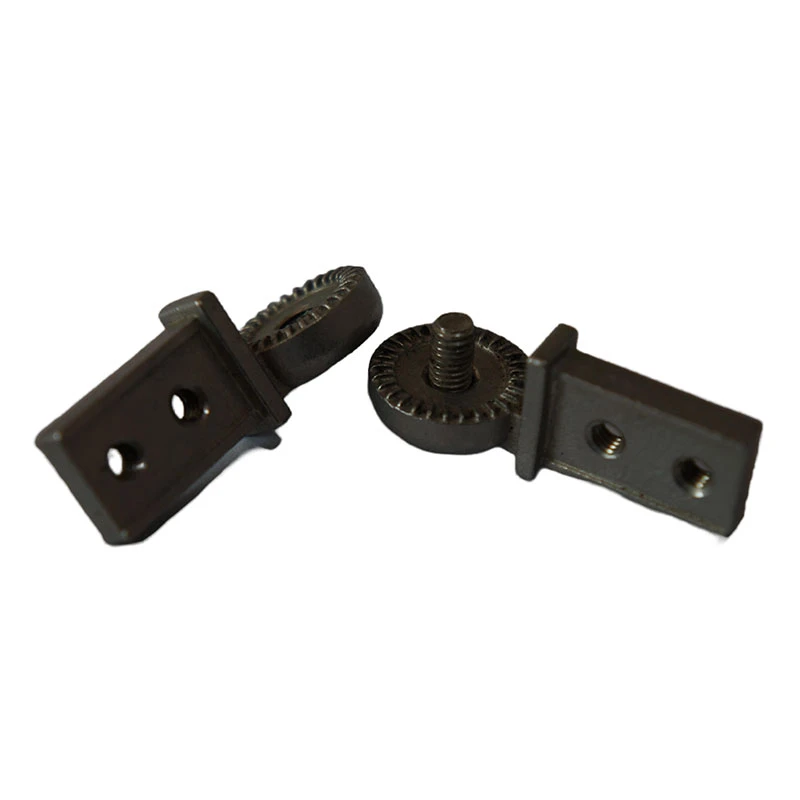Innovative Techniques and Applications of Abrasive Jet Machining in Modern Manufacturing
Abrasive Jet Machining An Overview
Abrasive Jet Machining (AJM) is a non-conventional machining process that utilizes the kinetic energy of high-velocity abrasive particles to remove material from a workpiece. Unlike traditional machining methods that rely on cutting tools, AJM employs a focused stream of abrasive particles carried by a jet of gas, typically air or nitrogen, to achieve precise cutting and shaping of various materials. This technique is particularly advantageous for machining brittle materials, such as ceramics and glass, where traditional methods may cause cracking or chipping.
The Process
The AJM process involves several key components an abrasive material, a jet nozzle, and a carrier gas. The abrasive particles, usually aluminum oxide, silicon carbide, or garnet, are mixed with the gas and accelerated through a nozzle under high pressure. As the mixture exits the nozzle, it forms a high-velocity jet that strikes the workpiece surface, causing material removal through both impact and erosion.
One of the critical factors influencing the effectiveness of AJM is the parameters set during the operation, including the particle size of the abrasives, the gas pressure, the nozzle diameter, and the stand-off distance (the gap between the nozzle and the workpiece). By adjusting these parameters, operators can control the depth of cut, surface finish, and overall machining efficiency.
Advantages of AJM
Abrasive Jet Machining offers several advantages over traditional machining methods
1. Precision AJM allows for high precision and fine detail in machining, making it suitable for intricate designs that require tight tolerances.
2. Versatility This process can be used to machine a wide variety of materials, including metals, plastics, ceramics, and composites, which makes it an attractive option for diverse applications.
abrasive jet machining

4. Environmentally Friendly AJM uses compressed air or inert gases, which can be more environmentally friendly compared to other machining processes that may involve oil or coolant.
5. Reduced Tool Wear Since AJM does not rely on traditional cutting tools, the wear and tear associated with tooling are significantly minimized, which can lead to lower operational costs in the long run.
Applications
Abrasive Jet Machining is widely used across various industries, including aerospace, automotive, semiconductor, and medical device manufacturing. Common applications include
- Surface Cleaning AJM is effective for removing contaminants from surfaces before further processing or assembly. - Micro-machining The precision of AJM makes it suitable for producing micro-scale components in electronics and other high-tech sectors. - Cutting and Shaping It can be used to cut intricate shapes in brittle materials like glass and ceramics without causing cracks.
Limitations
Despite its many advantages, AJM does have some limitations. The process tends to be slower than conventional machining methods, particularly for thick materials. The depth of cut is also limited, and in some cases, a secondary process may be needed to achieve the desired specifications.
Conclusion
Abrasive Jet Machining is a viable option for industries requiring high precision and versatility in machining materials that are difficult to work with through conventional methods. By harnessing the power of high-velocity abrasive particles, AJM provides an efficient solution for modern manufacturing challenges, helping to push the boundaries of what is possible in material processing. As technology advances and the demand for complex and intricate designs increases, AJM is likely to play an increasingly important role in the future of machining.
-
Precision Casting AI Solution with GPT-4-Turbo | Optimized QualityNewsAug.02,2025
-
Precision Sheet Metal Stamping Manufacturer | Fast & ReliableNewsAug.01,2025
-
OEM Sand Cast Pump Valve Fittings - Baoding Hairun Machinery And Equipment Trading Co., Ltd.NewsAug.01,2025
-
Custom OEM Impellers | High Efficiency & PrecisionNewsAug.01,2025
-
OEM Sand Cast Pump Valve Fittings - Baoding Hairun Machinery | Customization, Quality AssuranceNewsAug.01,2025
-
OEM Sand Cast Pump Valve Fittings - Baoding Hairun Machinery And Equipment Trading Co., Ltd.NewsAug.01,2025















